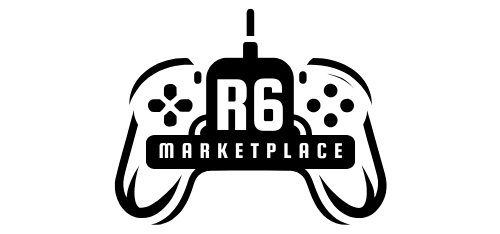The gaming industry has evolved rapidly over the past decade, with game development tools becoming more powerful, accessible, and feature-rich. As we step into 2025, game designers have access to advanced software that simplifies development while offering cutting-edge technology such as artificial intelligence, virtual reality, and procedural generation. Whether you’re an indie developer or part of a large gaming studio, choosing the right game design software 2025 can make a significant difference in your creative process. This article explores the best game design software in 2025, their features, and why they stand out.
What to Look for in Game Design Software 2025
Before diving into the best options available, it’s crucial to understand the key factors to consider when choosing game design software. Here are some of the most important features:
- User-Friendliness: Software should be easy to navigate for beginners while offering advanced tools for experts.
- Cross-Platform Support: Games are played across multiple devices, so your software should support various platforms like PC, consoles, and mobile.
- Performance and Scalability: Ensure that the software can handle complex projects without significant performance issues.
- Graphics and Rendering: High-quality rendering engines ensure stunning visuals for immersive gameplay.
- AI Integration: AI-powered tools help automate repetitive tasks and enhance game mechanics.
- Cost and Licensing: Some tools are free or come with a one-time purchase, while others operate on subscription-based models.
Now, let’s explore some of the best game design software 2025 that developers should consider.
1. Unreal Engine 5
Unreal Engine 5 continues to be one of the most powerful game development platforms in 2025. Its real-time rendering capabilities and photorealistic graphics make it a top choice for AAA game studios and indie developers alike.
Features:
- Nanite Technology: Allows developers to create detailed environments without performance issues.
- Lumen Global Illumination: Delivers realistic lighting and reflections.
- Blueprint Visual Scripting: Ideal for non-programmers to build game logic.
- VR and AR Compatibility: Supports cutting-edge technologies for immersive experiences.
- Free to Use: Revenue-based licensing model, making it cost-effective for small developers.
2. Unity 2025
Unity remains a favorite among game developers due to its flexibility, ease of use, and vast asset store. It is widely used for both 2D and 3D game development.
Features:
- Universal Render Pipeline (URP): Enhances graphics without compromising performance.
- DOTS (Data-Oriented Technology Stack): Improves game performance and scalability.
- AI and Machine Learning Tools: Helps developers create intelligent NPC behavior.
- Multi-Platform Support: Exports games to PC, consoles, mobile, and web.
- Robust Community Support: Active forums and learning resources for developers.
3. Godot Engine
Godot is an open-source game engine that has gained significant popularity due to its lightweight nature and powerful capabilities. It is an excellent choice for both 2D and 3D game development.
Features:
- GDScript: A Python-like scripting language optimized for game development.
- Visual Shader Editor: Allows for easy creation of complex visual effects.
- Scene System: Makes project organization intuitive and efficient.
- Completely Free: No royalties or hidden costs.
- Growing Popularity: More game developers are adopting it due to its flexibility and open-source nature.
4. CryEngine
CryEngine is known for its stunning graphics and powerful physics engine, making it a great choice for developers looking to create realistic environments.
Features:
- Realistic Water and Vegetation Rendering: Ideal for open-world and nature-based games.
- Flowgraph Visual Scripting: Allows non-programmers to develop gameplay mechanics.
- Real-Time Ray Tracing: Enhances realism in lighting and reflections.
- Free to Use: Only requires revenue sharing after a certain threshold.
- Advanced AI Tools: Enables smart NPCs and enemy behavior.
5. GameMaker Studio 2
For developers focusing on 2D game development, GameMaker Studio 2 is one of the most accessible and efficient software options available.
Features:
- Drag-and-Drop Interface: No coding experience needed for beginners.
- GML Scripting: Provides deeper control for advanced users.
- Cross-Platform Development: Supports PC, mobile, and console exports.
- Built-in Physics Engine: Allows realistic object interactions.
- Affordable Pricing: One-time purchase or subscription-based models.
6. RPG Maker MZ
RPG Maker MZ is a niche software specifically designed for creating role-playing games (RPGs). It offers an easy-to-use interface while providing flexibility for advanced users.
Features:
- Prebuilt Assets: Large library of sprites, tilesets, and sounds.
- Event System: No programming required for building RPG mechanics.
- JavaScript Support: Advanced users can customize gameplay.
- Easy Animation Tools: Ideal for storytelling and cutscenes.
- One-Time Purchase: No ongoing fees.
7. Amazon Lumberyard
Amazon Lumberyard is a free, cross-platform game engine that integrates with AWS cloud services, making it ideal for multiplayer and cloud-based gaming.
Features:
- Seamless AWS Integration: Easy cloud-based multiplayer hosting.
- Twitch Integration: Ideal for streamers and interactive gaming experiences.
- CryEngine Fork: Offers high-quality rendering and physics.
- No Royalty Fees: Completely free for developers.
- VR and AR Support: Enables next-gen gaming experiences.
Conclusion
Choosing the right game design software 2025 depends on your project requirements, budget, and level of experience. Unreal Engine 5 and Unity 2025 remain the industry giants, offering comprehensive tools for both 2D and 3D game development. Godot and CryEngine are excellent alternatives, while GameMaker Studio 2 and RPG Maker MZ cater to niche developers focusing on 2D and RPG games. Amazon Lumberyard provides a free, cloud-powered option for multiplayer games.
With the advancements in AI, VR, and cloud gaming, 2025 is an exciting year for game developers. Whether you are a beginner or an expert, selecting the right software can streamline your workflow and help you bring your gaming ideas to life.
May Also Read: r6marketplace

